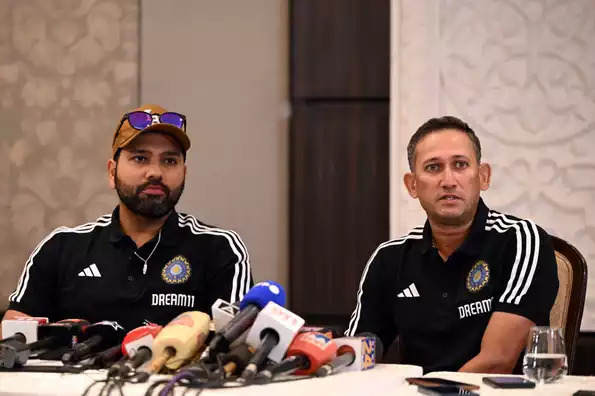
India’s captain, Rohit Sharma, has emphasized the need for his team’s members to be adaptable and dynamic in the batter’s box, saying that he has stressed this point to his teammates. Rohit said the team’s hitters have been briefed on their responsibilities, but they must be flexible enough to make adjustments during games if necessary.
“One thing I want in this team is to make sure everyone is okay to bat anywhere,” Rohit said on Monday (August 21) at a press conference announcing India’s Asia Cup squad. “That’s one thing we need to keep in mind. You need flexibility, guys who can step up at any position. No one should say, ‘I’m good at this position or I’m good at that position’. You want guys to be able to bat anywhere, that’s the message conveyed to every individual. Not now, but over the last three-four years.”
For instance, the No.4 position has historically been a focal point for the ODI squad, but the Indian skipper emphasized that other players might fill that role depending on the circumstances of each match. He gave the example of utilizing floater Axar Patel, which India had tried in the T20 World Cup last year against Pakistan, to counteract the opposition’s strategy of containing India with spinners. The other hitters below him might slide down a spot, giving the team more hitting depth while also giving him an advantage in potential matchups.
“Where things boil down to is the batting option at No. 8 and 9. Axar, you know he’s had a good run this year, batted well in white-ball cricket. He had a few opportunities in the West Indies but couldn’t make it big, but with him being there, it gives us the option of having a left-hander who can go up the order and play spinners if required, and also create batting depth.
“I know it’s tough for guys on the outside to understand why a guy who bats at six is batting at four, but the message has been given. This is international sport, not club cricket that you’re talking about. It’s not like we go to sleep giving a position for a certain player and then change it the next morning.
“We say, ‘this is what we want’. You don’t want to be handicapped or stuck with one player batting in one position. Having said that, you want to get the best out of players in certain positions. All seven-eight numbers are open to anyone, that’s the message we have sent out for so many years now.”
But Rohit was quick to emphasize that what he meant by “flexibility” was staying within the bounds of the overall function that each player was tasked with, and not just being “dynamic” for the sake of it.
“When I said flexibility is important, it’s not like I’m implying sending the opener at No. 7 or opening the batting with Hardik Pandya,” Rohit said. “Shikhar [Dhawan] and Rohit have only opened in the last seven-eight years, Kohli has batted only at three. Youngsters who come in at four-five, it’s important for them to be flexible, batting up and down.
“In the last four-five years if you look, the opener has opened, No. 3 has batted at three, KL [Rahul] has batted five, Hardik six, [Ravindra] Jadeja seven. Four and five, sometimes if they move up and down, there’s no problem. That much flexibility is important. Our position too when we came in, we batted up and down, I’m talking of that flexibility. It’s not like opener bats at eight and eight opens, we don’t do such mad things. Little bit of flexibility up and down is needed in a team.”










